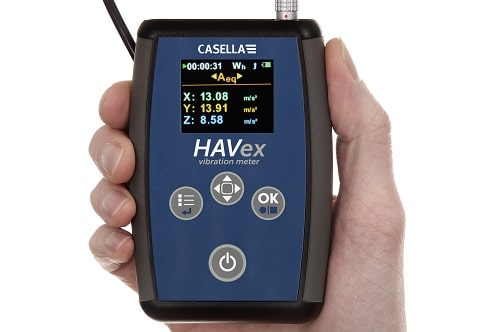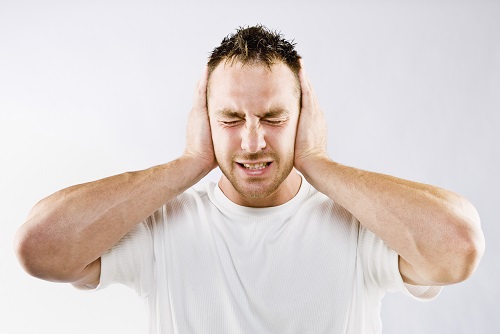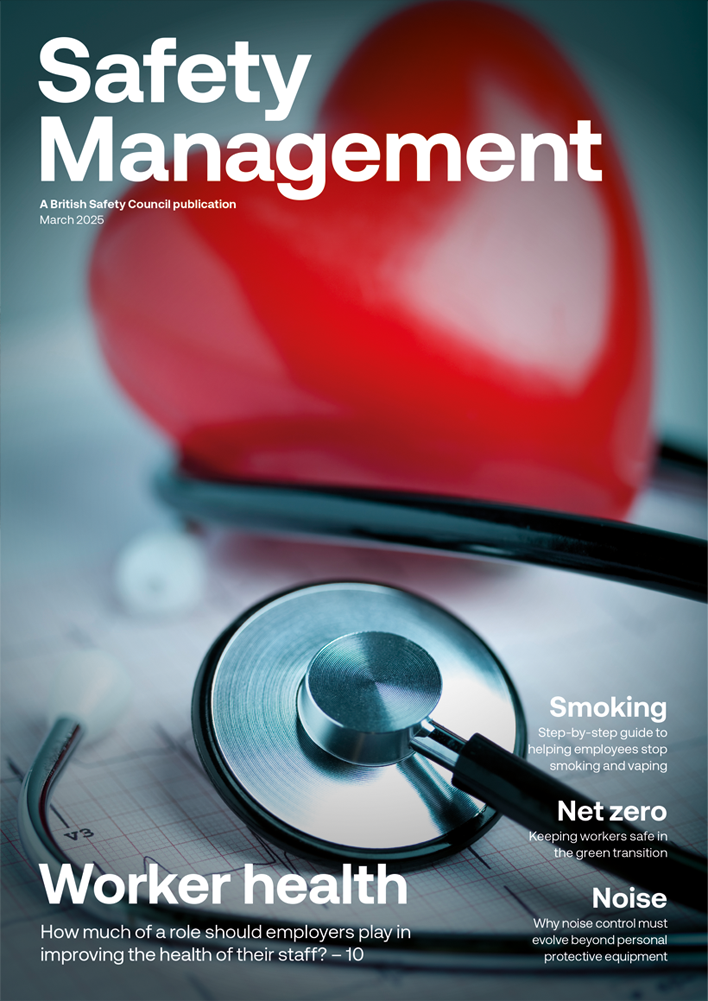Wearable technologies are shaking up how we move, respond to and pre-empt the risks around us. No longer a simple hard hat and yellow jacket, the new breed of safety wear can give us virtual instructions, alert us to hazards and detect fatigue. Perhaps, as Ruby Wax predicted at last year’s Safety Expo, cortisol monitors will one day alert us to stress levels to prevent illness. In the meantime, this top-five list is based on new and influential technologies. Think of it as a fashion forecast for the safety professional.
Features
Wearables to watch in 2019
1.Vital signs monitoring
Wearable vital signs monitors are sensor-equipped devices worn by a worker that monitor bodily metrics in real time, such as temperature, fatigue, ergonomic stresses and heart rate.
Vital signs tech is moving at a fast pace, with several innovators and a high adoption rate, according to Bill Pennington, senior analyst at Verdantix. Its 2019 Tech Roadmap report for EHS Technologies published in January put the pace of innovation of vital signs monitoring at less than two years (it analysed 25 technologies in total, the majority of which it says will take five years or more to mature). “I think that vital sign monitors are furthest along on the road map of wearables that will be implemented in the near future,” Bill tells us. Verdantix asked 411 EHS decision-makers, what technologies they are going to use in 2019: “About 50 per cent of the European respondents are going to be using one of either location wearables or for vital sign monitoring.”
Examples in this field include ViSafe, wearable sensor technology that uses 3D tracking technology to assess movement and muscle activity. Sensors are placed on the back and shoulder of the employee and data is collected that can help inform practice changes or equipment choices.
Kenzen Patch monitors body temperature and Optalert produces wearables that measure worker fatigue in real time to prevent microsleeps among equipment drivers and operators.

The majority of wearable technologies will take five years or more to mature, says Verdantix
2. Mobile workforce solutions
Location-tracking devices and sensor wearables fall into this category. There’s been a proliferation of these solutions in the leisure market, for example, the Nike running app allowing users to map where, how far and how fast they’ve run as well as compare routes with other users. In safety, mobile workforce solutions in the form of mobile devices, or multifunctional sensor wearables, connect workers through internet of things devices, creating a connected workforce that can be monitored from a centralised platform.
Interesting examples in this category include Ten Degrees’ location tracking for industrial worker safety. It produces analytics of workers’ movements to develop risk assessments based on heat maps.
British Safety Council’s new air pollution app Canairy, which launches on 12 March, uses location-tracking software and live pollution data to produce readings of workers’ exposure to fine particulate matter PM2.5, nitrogen dioxide and ozone – health-harming substances in air pollution produced by vehicles.
3. Workplace health and wellbeing apps
This is a broad category – employers may choose to recommend any number of freely available apps on meditation, sleep, nutrition and exercise to their staff. Apps can work well for people who feel uncomfortable asking for help with mental health or other concerns, allowing people to access information in private.
Belfast Health and Social Care Trust has produced its own app, the B Well app for staff. It contains unique content created by professionals, including clinical psychologists and cognitive behaviour therapists, in a format that allows “busy Belfast Trust staff the opportunity to dip in and out of resources at a time that is most convenient to them”.
Predictive analytics is also being deployed into apps in interesting new ways. VTT, the technical research centre of Finland, has been finessing its AlvinOne app since launching in 2017. The team analysed a large database of around 120,000 employees to develop machine learning-based methods to understand how different people’s health may develop over the longer term. “The application uses a wide range of factors, thus creating a holistic view of the user,” says developer Mark van Gils at VTT.
“It takes into account lifestyle factors such as sleep, physical activity and alcohol/tobacco usage, combined with factors such as mood, stress and pain assessments as well as background demographics.” The app can be used by employees to help them make behaviour changes. Employers also receive anonymised group-level reports on risks and current health challenges: the idea is to provide data about the situation as a whole so that preventive services can be implemented, resources can be targeted efficiently and effectivity can be measured over time.

Beware those firms that choose to opt for technology without putting equal efforts into good line management and face to face support, however, says Nigel Heaton director of Human Applications. “A really effective app fits into the wider system for supporting colleagues.” He illustrates by asking us to imagine attending training with Powerpoint slides and no presenter. Just as visuals on the slides should prompt discussion, he says: “An app should be used as a way into talking about issues, to drive better behaviours, or even achieve measurable success. It will need to be supported by a wider system that includes human interaction if it is to be truly effective.”
4. Virtual reality
Virtual reality (VR) devices immerse the user in an environment that is computer-generated but allows the individual to navigate the environment as if physically there. James Mansbridge heads up the VR programme at the British Safety Council, which now has VR supplementing the learning experience on many of its training courses. “In the worlds of health and safety and wellbeing, the potential of VR is too great to be ignored,” says James. “It allows experiences that are engaging in a sensory way and an emotional one – massively increasing the likelihood that they will be remembered.”
Other examples include Immerse, a VR training programme for DHL to help trainees learn how to safely load delivery vehicles and the France-based training firm, Immersive Factory, which offers courses in VR-based working at height on a viaduct, public roadworks and crystal and glass-making scenarios.

A scene from Immersive Factory's glass-making warehouse VR training.
5. Wear several hats
Finally, despite the exhaustive list beyond what this top five can include, it’s likely that tech companies will be looking at how to combine safety technologies into one device. “As we move forward, you are going to see a lot of these wearables kind of merge into one,” says Bill Pennington.
A really good example of this is Guardhat, intended for workers in factories, plants, construction sites, oil rigs and mines. The hat’s functions include sensor technology that activates when a wearer enters a restricted zone, physiological condition monitoring, fall detection and live video guidance capabilities. “You would need at least 10 devices in addition to the hard hat to replicate the functionality of Guardhat,” says PR consultant Philippa Watts. She says investment can be justified: “The best way to think about pricing is that it costs the same on a daily basis as the sandwich you have for lunch.”
FEATURES

5 trends to watch in the safety sector in 2025
By David Head, Draeger Safety UK on 19 March 2025
Dräger’s annual Safety and Health at Work Report provides a useful insight and snapshot into the views of employees and managers on safety in UK workplaces. This year’s report suggests employers need to increase and refine their efforts in areas such as employee mental wellbeing, more structured safety training and greater use of digital and connected safety technology.

Get a hold on HAVS, before it’s too late
By Tim Turney, Casella on 18 March 2025
Employers may need to carry out measurements of hand-arm vibration from hand-held tools and machinery to identify if workers are at risk of debilitating and permanent damage to their fingers, hands and arms, but it’s essential the measurement equipment is used in the correct way.

The UK Hearing Conservation Association: how we work to promote the protection of the nation’s hearing health
By Leah Philpott, member, UKHCA At Work Group on 14 March 2025
The UK Hearing Conservation Association is a multi-disciplinary association that strives to prevent damage to the nation’s hearing health and other noise-related health conditions through a combination of practical, evidenced and cost-effective campaigns, awareness-raising activities and best-practice advice. It is therefore a great forum for those wishing to keep abreast of the latest developments around hearing health – both in the workplace and in recreational settings.



